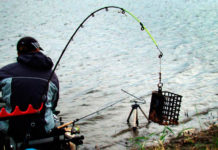A wetsuit is something without which almost no water sport is possible. From spearfishing to triathlon, scuba diving to kitesurfing, swimming pool competitions to open water swimming, special equipment is needed everywhere. The editorial staff of the site "bestx.htgetrid.com/en/" offers you an overview of the best manufacturers of wetsuits in 2020.
Content
Why do you need a suit?
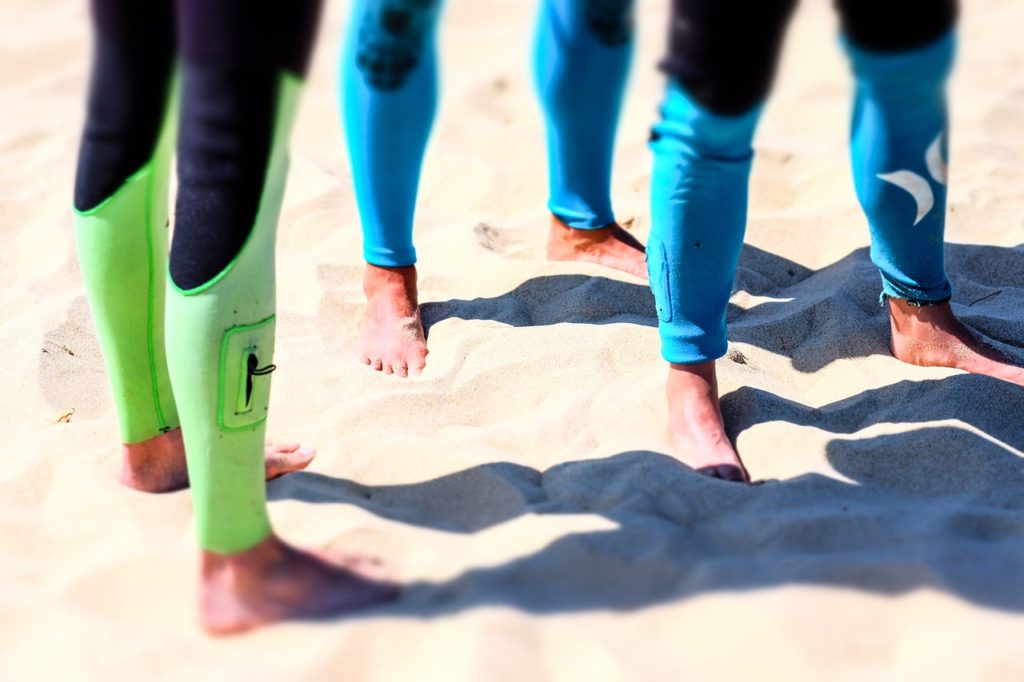
A wetsuit is a special clothing for a long stay in the water, the task of which is reduced to two main functions - to keep warm, preventing thermal shock or hypothermia, and to protect against mechanical damage.
The equipment reduces the impact of the aquatic environment, protects the swimmer's body from the negative manifestations of the surrounding flora and fauna, and also protects the skin from injuries, for example, when meeting a jellyfish or colliding with reefs. Also, the ammunition, which is affectionately referred to by the people as a hydrick, is capable of improving gliding, adjusting swimming technique, adding speed, and helping to stay on the surface of the water surface.
"Hydric" is effective only when, tightly fitting the body, fits tightly to the skin, and therefore elastic, well-stretching materials are used for its production, which are not damaged by stretching and easily return to their original state.
Depending on the purpose of the equipment, the wetsuit can be made of:
- neoprene (foam) - a subtype of synthetic rubber that has high thermal insulation properties, and is also soft, lightweight, elastic and comfortable for the body;
- lycra - a synthetic thread made of polyurethane rubbers, which is able to protect against sunburn and external damage, but not warm;
- trilaminate - a three-layer material (rubber coated on both sides with nylon) with high thermal insulation, but less elasticity and flexibility than foam.
Types of equipment for water sports
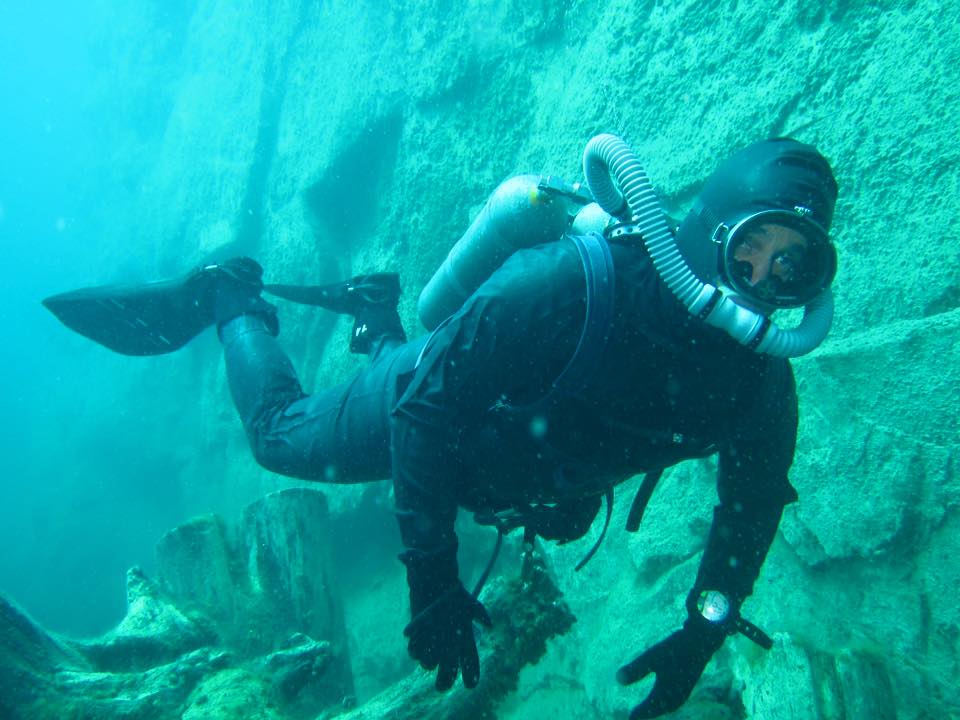
There are three types of wetsuits.
Wet are the most common and economical equipment. It got its name because of a peculiar way of action - a certain amount of water seeps through the fasteners, raw seams and other unprotected areas under the "hydric", which does not have a return outlet. As a rule, for a high-quality "wet" vestment, this volume is no more than one liter of water. When heated by body temperature, water becomes an additional protective layer between the rubber jacket and the body, reducing heat loss. Wet "wetsuits" are most often made of lycra or neoprene, the thickness of which is selected depending on the sport and the temperature of the water in which it is supposed to be.
Dry - their device is completely opposite to wet "wetsuits" for the reason that they do not get wet.The ammunition of this type is airtight due to the splicing of the main part with the hood, boots and gloves, as well as due to fasteners and obturation - sealing parts on the shins, neck and wrists. Thus, dry suits practically do not allow water to pass through and, thanks to a looser cut, allow you to put on thermal underwear. Dry equipment is additionally equipped with air valves to ensure a comfortable dive even in freezing temperatures. Made from foam or trilaminate.
Semi-dry - intermediate design, which implies little water penetration (up to 250 ml) even through the obturation. Semi-dry ones differ from wet "hydrics" by a denser and less elastic rubber base, as well as a waterproof zipper. Most often, such equipment consists of a jumpsuit over which a jacket is worn. The set may also include shoes, helmet, elbow pads and knee pads.
Cutting and modifications of wetsuits

The following outfit models are possible by the cut method:
- One-piece overalls (Full suit or monosuit) - completely covers the whole body, and in some cases even the head due to the built-in helmet. Only the feet and hands remain open. The most widespread, comfortable and safe style of "hydrics", the main thing is to choose the right size;
- The cropped cut is a modification of the solid jumpsuit, but with legs to the middle of the thigh and long sleeves (Spring wetsuit) or with sleeves to the middle of the elbow (Shorty wetsuit). The Spring wetsuit option is available with long legs and short sleeves. This equipment is suitable exclusively for swimming and sports training in warm water with a low hazard factor. The shortened wetsuit is not suitable for scuba diving, speleology and other deep water activities;
- Split uniform - divided into two parts, the first is an off-the-shoulder jumpsuit (Long John), and the second is a jacket with a zipper with long sleeves and a hood. In the groin area there is a button-fastener for attaching a jacket over the main outfit;
- Combo Sets - various combinations of the above options are possible, for example, combining a Short John cut (knee-length legs and open shoulders) with a Wetsuit Top (an elastic T-shirt with long or short sleeves);
- Women's bikini suits - in their cut, they are similar to standard swimwear, but with wider belts. As a rule, they are sewn from foam of bright colors with reflective inserts and various fastenings.
The main criteria for choosing equipment
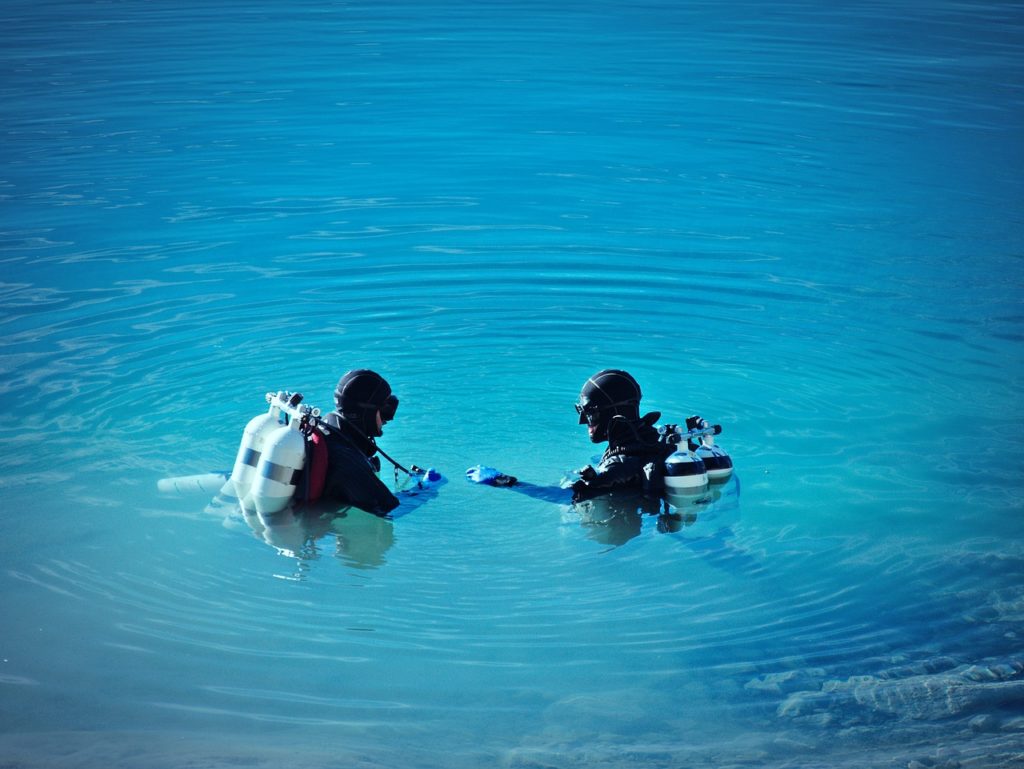
The choice of "wetsuit", first of all, depends on the purpose, that is, on the kind of sport that is supposed to be engaged. So, there are diving equipment (diving and freediving), hunting equipment, surfing clothes, swimming and triathlon uniforms.
Material and finish also play an important role. Most wetsuits are made from neoprene, a gas-foamed or chemically treated rubber that, after curing, is cut into sheets of thousands of micropores.
Depending on which sheets and which side were laid when sewing the product, the following options are possible:
- "Open time" - in this case, the vestments on both sides are made of porous raw materials, the equipment retains heat well due to its tight fit to the skin;
- "Naked" wetsuit - porous inside and polished on top, which contributes to fusibility, easy movement in water and rapid drainage of moisture when going to land, but there is no strength and the product quickly wears out;
- fabric backed neoprene - to enhance its protective and thermal insulation properties, the foam is covered (top and / or bottom) with nylon or lycra, which add strength and rigidity.
It's important to pay attention to the thickness, because the thicker the layer of the base material, the warmer the garment. There are averaged parameters for choosing the thickness of the foam, since it is necessary to take into account the individual characteristics of the organism.The approximate ratio of water temperature to foam thickness is as follows: 30-280C - lycra fit for sun protection, 28-210C - enough foam thickness of 2-3 mm, 21-180C - permissible 5-6 mm, 18-120C - you should choose 6-7 mm, 12-40C - the thickness of the wetsuit must be at least 9 mm, 4-00C - only dry type of equipment is possible.
Additional criteria for choosing equipment

- The size. The main mistake when choosing ammunition is the wrong size. Consider height, bust, waist, and hips. If it is not possible to immediately try on the equipment, you should measure the width of the shoulders, the girth of the bicep, knee, wrist, calf and ankle. In the case of buying a solid jumpsuit, you need to find out the length of the back from the lower cervical vertebra to the tailbone and the width of the seam along the inner side of the leg from the groin to the ankle. It should be remembered that the size tables of manufacturers may differ, and therefore all the data obtained must be carefully checked with the size system of the selected company;
- Cut. The style of the product must be selected taking into account the weather and the type of sport. Even in equatorial waters you can get supercooled, so the main task is to protect the body as much as possible;
- Heaters. Plush is used (attached from the inside of the product and greatly facilitates the process of putting it on), nylon (both on the outside and on the inside), titanium or aluminum spraying (not only contributes to easy dressing of equipment, but also, due to its reflective properties, significantly reduces heat loss) ;
- Clasp system. The presence or absence of "lightning" is an important parameter. The long snake makes it easy to put on and take off your equipment. It can be located on the back, in this case, an appropriate tape must be attached to the lock, so that the equipment can be fastened or unfastened on its own, or on the chest, but in this case, wear the "hydric" longer. There are also shoulder straps, but they can get in the way during vigorous rowing (if any) and chafe the skin. The fasteners on the sleeves and legs help to take off and put on the equipment much faster, but reduce the thermal insulation properties, since water will flow through them.
Advantages and disadvantages
Advantages of wet suits:
- A wide range and varied selection of styles, taking into account the requirements;
- Acceptable cost;
- Does not make it heavier or interfere with outdoor activities, comfortable swimming in open water and water sports;
- High thermal insulation and elastic properties;
- Versatile and easy to use.
Disadvantages of wet ammunition:
- Some designs (with long sleeves and legs) are difficult to put on without the use of special helium, which improves the sliding of the material on the skin;
- Not strong enough and prone to damage.
Advantages of dry suits:
- Leakproof and watertight, maximizing heat retention;
- Design features allow thermal underwear or other warming clothing;
- Allows you to safely stay under water for a long time even in the coldest conditions;
- They have high strength and durability indicators;
- Used by professional divers.
Disadvantages of dry vestments:
- High price;
- Not suitable for all types of activities, as they restrict movement.
Advantages of semi-dry wetsuits:
- Keep warm well;
- Strong and durable enough to withstand contact with hard surfaces;
- Choice of thickness for different operating conditions;
- Comfortable fit and light weight.
Disadvantages of semi-dry styles:
- Not suitable for prolonged exposure to water (no longer than 2 hours).
Main technical characteristics
| room | Specifications | Recommendations |
|---|---|---|
| 1 | Manufacturer | The best manufacturers of equipment for diving and hunting - Beuchat, Waterproof, Cressi, AquaLung. Popular models for surfing, windsurfing, kiting and wakeboarding are available from Mystic and O'Neill. Inexpensive wetsuit products are made by Sargan and Oceanic. |
| 2 | Appointment | Distinguish between dry, semi-dry and wet wetsuits, each of which differs in technical characteristics and material thickness. |
| 3 | Material | Neoprene (gas or chemical foamed), trilaminate, lycra, synthetic fabrics. Foams from Sheiko and Yamamoto are considered the best. |
| 4 | Design | Distinguish between monosuit (Full suit), short modifications (Spring wetsuit or Shorty wetsuit), jumpsuit with open shoulders (Long John), jumpsuit with straps and short legs (Short John), T-shirts (Wetsuit top), shorts and women's bikinis. |
| 5 | Cut | For outdoor activities and swimming in the warm season, you should choose such open styles as Shorty wetsuit or Short John. For cold water, as well as activities such as diving to the reefs, swimming in water caves and hunting, one-piece coveralls with additional protective details are needed. |
| 6 | The size | It is important to choose the right size. The outfit should fit snugly, without folds or creases. But at the same time, do not squeeze the body, which can threaten with impaired blood circulation. |
| 7 | Optional accessories | Socks, boots, helmet, knee pads and elbow pads - provide additional protection from damage and thermal insulation. |
| 8 | Price | At the price of wetsuits differ depending on the manufacturer, configuration and type. Dry is much more expensive than wet - from 20,000 to 150,000 rubles. The average price for wet-type ammunition, taking into account the thickness of the material, style and purpose, varies in the range of 2,000 rubles for a shortened lycra cut and 15,000 rubles. behind a solid foam jumpsuit. |
What to look for when buying?
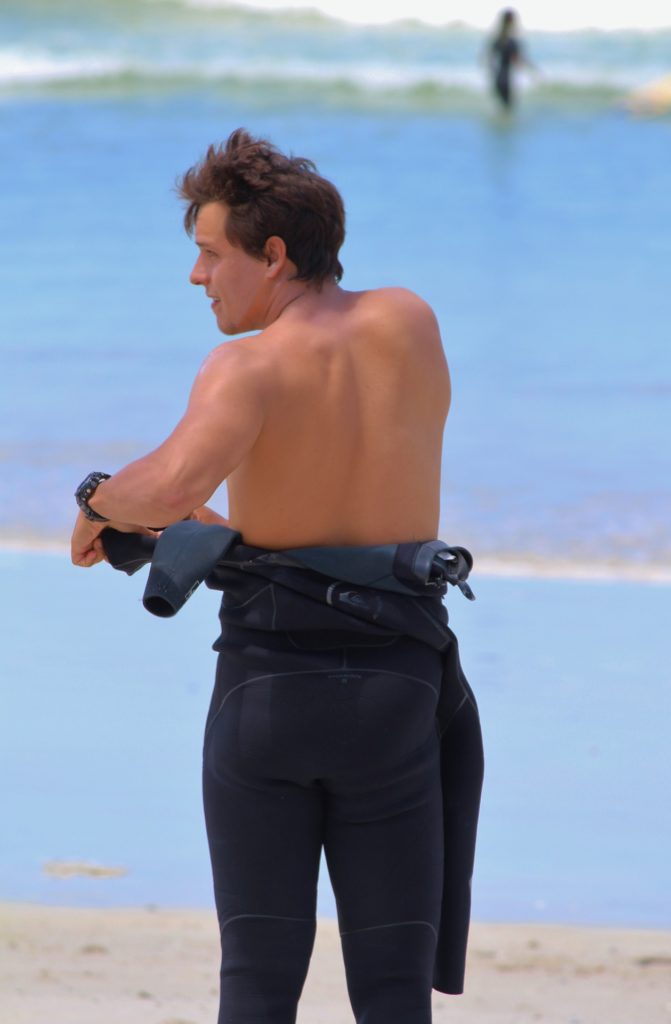
An important component of good ammunition, which will last more than one year, are strong and flexible seams. Manufacturers use several options for joining the joints of parts.
- "Overlock" is the simplest, inelastic and least effective method of processing seams, which is unacceptable in quality products, as it is permeable to water.
- The zigzag seam is weak, and therefore should be used only on those areas of the equipment that experience minimal stress.
- "Mauser" - a wide and strong, but not elastic seam, more suitable for dry vestments.
- "Blind" (secret) seam is flexible and strong due to the fact that the material is first glued and then stitched on both sides. This brings the outer and inner stitches together. The blind seam is most useful in cold water equipment.
- Also, when choosing equipment, you should pay attention not only to stitching, but also to the technology of joining parts of the product.
- In budget designs, the edges are simply superimposed on each other and stitched - not the most reliable way, moreover, it can cause discomfort when worn.
- A flat seam, in which parts of the fabric are joined with the edges close to each other before sewing, is suitable only for wet clothing and warm water, since there are many holes from the needle.
For additional reinforcement, seams can be glued with adhesive tape over a line or at a seam. A more expensive option is possible - impregnation with liquid rubber. Structures in which the seams are held together exclusively with adhesive should be bypassed, such styles, although cheaper, can quickly break. The method of sewing seams must be specified in the product description.
How do I choose additional accessories?

When buying a wetsuit, you should immediately think about auxiliary attributes - a helmet, gloves, boots or socks. Individual athletes do not need them, such as surfers and triathletes. But underwater hunters and speleologists cannot go without them.
The socks, in addition to keeping warm, protect the feet from rubbing with fins and damage against stones. When putting on, the socks are tucked under the legs, providing a strong grip of materials and, as a result, almost complete tightness. The intake water will no longer get under the clothes in the crevices on the ankles, which will increase the time spent in the water. Some firms produce socks separately for the right and left legs. The most common are socks with a thickness of 3 mm.
The boots, in addition to a more durable construction, additionally have a relief compacted sole, which greatly facilitates movement on land. According to buyers, bots should be purchased in sizes from 3.5 to 5 mm.
Gloves are needed for safe interaction with the bottom, flora and fauna of the reservoir. The need for them also arises at temperatures below 200C. According to reviews, the best thickness for hand protection is 3-5 mm; for low-temperature waters, 7 mm should be chosen, but in this case it will be difficult to carry out the usual finger manipulations.
The helmet (in some designs it is built into the "wetsuit" in the form of a hood) should ideally fit the size of the head, not squeeze, but not dangle. It should have inserts made of fabric in the area of the ears, so that during diving and emerging there is no sticking and, as a result, the pressure of neoprene on the eardrums. The fabric insert at the back of the head allows you to painlessly adjust the hood without the risk of hair pulling out.
Which wetsuit is better to buy?
Each type of water sports, taking into account the operating conditions, as well as the characteristics and magnitude of the loads, requires its own equipment that meets certain requirements.
For spearfishing

Dry, wet and semi-dry uniforms are available for both men and women. The popularity of wet-type models is due to the convenience and low cost of equipment compared to dry and semi-dry types, which are most often used by professionals. Wet wetsuits are preferable to choose "open-porous" inside and duplicated with nylon outside, or "naked" - porous from the inside and smooth from the top. In cut, these can be solid monosuits (under which you can put on thin neoprene T-shirt and shorts) or separate designs, consisting of high pants (sometimes with shoulder straps) and a jacket with a hood. The thickness of the vestment depends on the climatic conditions and the depth of the reservoir. In summer, at a depth of up to ten meters, a thickness of 3 mm is sufficient, in the spring it is better to stop at 5 mm, for autumn hunting it is advised to choose 7 mm.
The product must have obturation - tight edging along the edge of the sleeves and legs, as well as the hood. The areas on the knees and elbows should be additionally reinforced with fabric inserts, and on the chest there should be an insert for supporting a hunting rifle or crossbow. Most hunting wetsuits come in camouflage colors using green and brown shades so that the hunter can be less visible against the background of the bottom, but there is also a monochromatic outfit - black, gray and blue.
For swimming in the pool, open water and triathlon
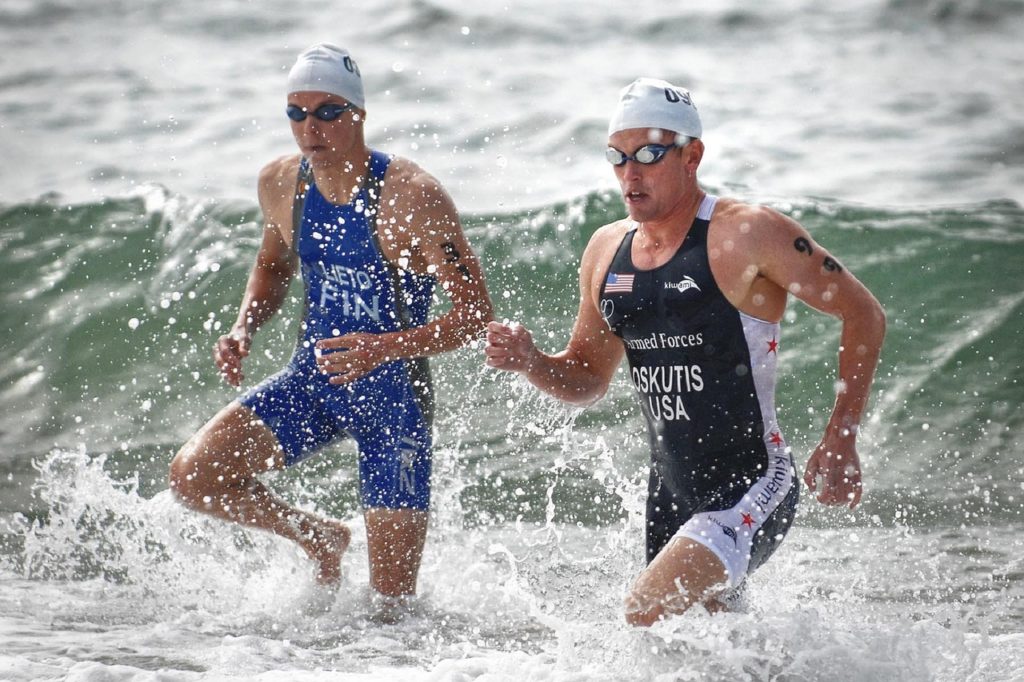
Equipment of this category is designed specifically for professional training and competition in artificial sports reservoirs, as well as for swimming in oceans, seas, lakes and rivers. Available in men's, women's and unisex styles, as well as clothing for children. The main task of such vestments is to increase the speed performance of an athlete by improving buoyancy and reducing water resistance.
When sewing products for the pool, intended for swimming at a temperature not lower than 230Combinations of synthetic raw materials are used - nylon, lycra, polyamide, elastane, carbon fiber, teflon. Such styles are usually as thin, light and open as possible. The main requirement is resistance to disinfectants and fast drying speed.
For swimming in open water, foam vestments with a thickness of 1 to 2.5 mm are used, which are often duplicated with fabric (nylon) on both sides to increase buoyancy and facilitate putting on. In a triathlon, the water temperature according to the established rules does not exceed +230C, and therefore it is allowed to use neoprene wet wetsuits up to 5 mm thick. Clothing must be UV resistant.
The shape and cut, depending on the external conditions, are suitable for solid overalls, their shortened modifications and separate designs, consisting of T-shirts with open shoulders and shorts.Women's versions of wetsuits are possible with an open back (the so-called "starting", most often used for competitions in pools) or closed with a zipper. The difference between women's and men's sets is the presence of special inserts, taking into account the anatomical features of the female and male figure. At the same time, clothes should have a minimum of seams or be completely seamless, extremely smooth, and, squeezing the body, promote muscle tone and create compression to improve blood flow. But at the same time, do not pinch the chest and do not obstruct breathing and movement.
For surfing and kiting

For surface sports, only wet equipment is suitable. It should be borne in mind that surfers and kiters spend a lot of time in the wind, and therefore, when choosing clothing, it is important to consider not only the temperature of the water in which it is supposed to be, but also the strength and humidity of the wind. In a wet wind, heat loss occurs faster, and therefore it is important that the vestment dries quickly and does not overcool the body. For example, fabric-lined wetsuits are stronger and more durable, but dry for a long time.
By design, it is better to choose a monosuit or jumpsuit with open shoulders and long legs. In the summer at a temperature of 20-250With a short vestment 2-3 mm thick, in cool autumn-spring weather at 15-200With it is worth choosing a solid wetsuit of 4-5 mm, in winter, when the temperature drops to 00It is necessary to wear full uniforms (with socks, helmet and gloves) 7-9 mm thick.
The best option is to have two suits - one one-piece one that completely covers the arms and legs, and the other one shorter with resistance to the sun rays for hot climates.
It is also important to have wide protective inserts and rubber pads to protect against impacts on the board. Novice athletes should also purchase a protective vest.
For diving
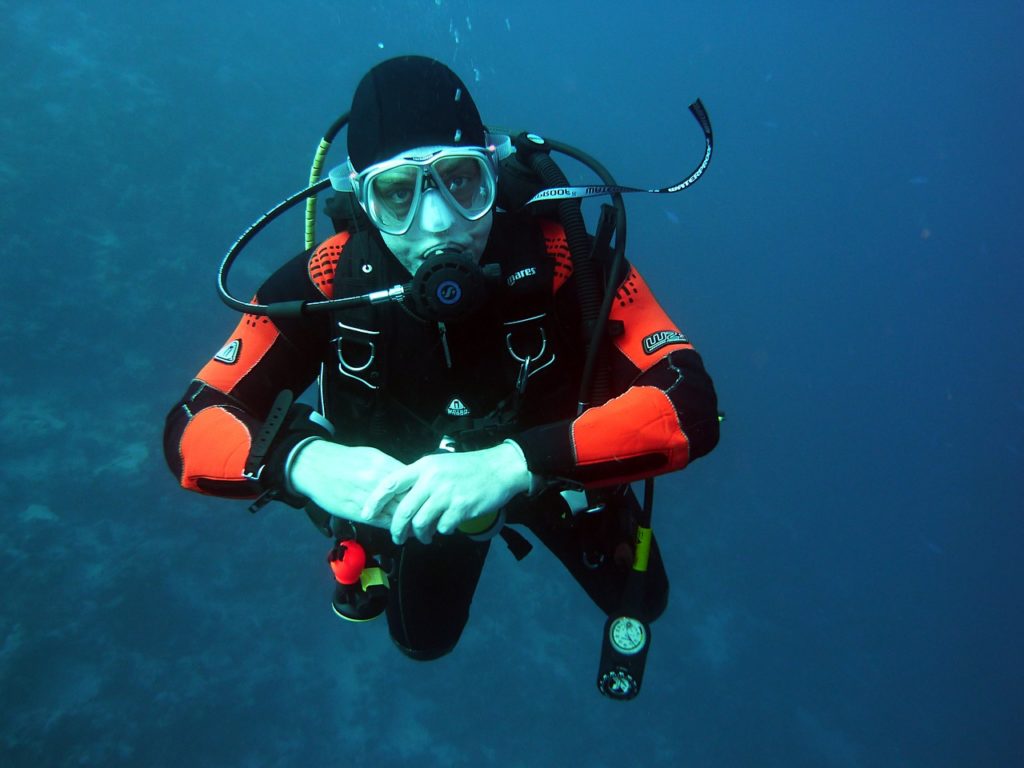
Wet or semi-dry clothing is suitable for diving. Particular attention should be paid to how the clothes fit on the body. In the area of the armpits between the material and the body, there should be some distance for freedom of movement of the hands, and in the area of the perineum and lower back, a tight, but not squeezing fit of the equipment is necessary. There should also be no pressure on the neck, this can cause severe discomfort when diving. It will not hurt if there are guide grooves on the equipment in the chest area, which will facilitate movement under water.
When trying on, you should pay attention to how the zipper is fastened - if it is too easy, you need a product one size smaller, if very tight, then a size larger.
By design, a diving uniform can be of a solid, separate or combined type (including with additional items of clothing) - it all depends on the depth and in what climatic conditions the dive will be made. When immersed in areas where the temperature is 280From and above, you can do without special clothing at all, or choose equipment 1-2 mm thick, 3 mm are suitable for 20-280C, 6mm is enough for 18-200C, 7mm is required for 12-180C, 9 mm needed for 12-40C. For diving in extremely cold conditions (below 40C) only dry type should be chosen.
For underwater speleology
Speleologists, as well as everyone who is forced to be in the cold for a long time (from 100From and below) to water, dry type ammunition is required made of foam with a thickness of 7 to 9 mm or trilaminate with plush or nylon insulation. In addition to the "hydric", a complete set of equipment is required, including thermal underwear. It is important to pay attention to the way the seams are processed. For speleology, additional sizing is required. The zipper should be gastight and covered with additional flaps.
Rating of the best manufacturers in 2020
Waterproof
- Brand country: Sweden;
- Raw materials: neoprene, trilaminate, lycra;
- Type: dry, wet, semi-dry;
- Rulers: D, SD, W, Neoskin;
- The price of a wet suit in Waterproof (5 mm) is 32,000 rubles.
European company founded in 1994.It specializes in the development and production of high quality equipment for professional divers and divers, as well as warm underwear and related accessories, including for challenging expeditions.
From the first years of their activity, they have been testing products in the Arctic during diving in extreme conditions.
Advantages:
- anatomical cut and optimal fit;
- the presence of male and female styles;
- lightweight and comfortable shape;
- thoughtful design using 3-D technologies;
- durability;
- a wide range of designs, sizes and thickness of products;
- laconic elegant style.
Disadvantages:
- limited color palette;
- high price.
AquaLung
- Brand country: USA, Italy, France (multinational company);
- Raw materials: trilaminate, foam, lycra;
- Type: dry, semi-dry, wet;
- Lines: Iceland, Blizzard, Fusion, Skin, Dive, Mahe, Balance, Bering, Bali;
- The price for the Aqua Lung DIVE (5) ammunition is 15,000 rubles.
The products of this brand have been on the market for over 60 years. The company produces equipment for technical and recreational diving. Collaboration was carried out with Jacques-Yves Cousteau. In addition to "wetsuits", the company produces scuba gear, fins, masks, knives, shoes, gloves, regulators, insulation and underwear, helmets, flashlights and much more.
Advantages:
- affordable cost;
- women's, men's and unisex styles;
- a wide range of;
- there are children's clothes;
- quality materials;
- stylish design;
- cut taking into account the characteristics of the female and male figure;
- meet the requirements of both beginners and professionals.
Disadvantages:
- not suitable for all sports.
Omer
- Brand country: Italy;
- Raw materials: neoprene;
- Type: wet;
- Lines: Camu, Gold Black, Master Team;
- Price for vestments Mix 3D (5) - 20,000 rubles.
One of the leaders in the production of equipment for diving, swimming and hunting. For the latter, it also produces guns, tools and accessories. The company has been on the market since the 70s and was initially engaged in a limited edition of equipment for champion hunters.
Advantages:
- known as one of the best manufacturers of hunting clothing;
- Sheico foam is used;
- with the function of 3-D camouflage coloring;
- anatomical cut;
- the ammunition is suitable for breath-holding diving;
- restrained classic style of products;
- acceptable cost.
Disadvantages:
- limited choice of style and design, including for women.
ScubaPro
- Brand Country: USA;
- Raw materials: neoprene, lycra, trilaminate;
- Type: wet and dry;
- Lines: Holo, Black, Definition;
- The price of the Scubapro Sport (5) equipment is 20,000 rubles.
The brand originated in the 60s of the XX century and became famous for the release of Jet Fin fins, which are chosen by professional scuba divers. The production of not only hydraulics, but also regulators, tools, masks, tubes, bags and other accessories has been established. The functionality of the products is designed primarily for divers - both for amateurs and for those athletes who dive to a depth of over 40 meters.
Advantages:
- modern design;
- there are styles for women and men;
- high thermal insulation properties;
- use of high-quality foam;
- versatility and versatility of ammunition;
- affordable price.
Disadvantages:
- limited assortment and color palette.
Sargan
- Brand country: Russia;
- Raw materials: lycra and foam;
- Type: wet;
- Lines: Nero, Stalker, Kalan, Neman, Sivuch, Ural;
- The price for the Sargan Stalker (5) wetsuit is 15,000 rubles.
Initially, the company worked on individual orders, producing products in limited quantities. The first developments were designed for underwater hunters, many famous Russian athletes were involved in cooperation. Since May 2002, the assortment has been expanded, and they began to produce lamps, socks, mittens, bags and other related products.
Official supplier of equipment for the Russian spearfishing team.
Advantages:
- a wide range of models and colors;
- affordable cost;
- bio-digital camouflage;
- comfortable anatomical cut;
- elastic foam manufactured by Yamamoto;
- there are female and male styles.
Disadvantages:
- the functionality is designed primarily for spearfishing and diving.
Mares
- Brand country: Italy;
- Raw materials: neoprene, lycra;
- Type: dry and wet;
- Lines: Pro Fit, She Dives, Manta, Trilastic, Squadra, Rush Guard;
- The price for a wet wetsuit with a thickness of Mares Squadra (5) is 17,000 rubles.
The company has been known in the world of underwater sports for over 50 years. Manufactures equipment for technical diving, freediving, hunting and beach recreation based on innovative developments and the latest technology. A wide range of products and equipment for both professionals and beginners. It is considered one of the leaders in its industry.
Advantages:
- affordable price;
- a separate She Dives line for women, taking into account the peculiarities of the body structure;
- a sufficient range of colors and styles of diving vestments;
- versatility of equipment;
- superelastic foam.
Disadvantages:
- limited selection of equipment for hunting.
Cressi
- Brand country: Italy;
- Raw materials: neoprene;
- Type: wet;
- Lines: Castoro, Baby, Tecnika, Tarnica, Apnea, Scorfano;
- The price of ammunition Castoro (5) - 11,000 rubles.
One of the first companies in the world to manufacture hunting and diving equipment. She owns many of the developments that gave rise to the development of scuba diving. All new products are made on the basis of computer-aided design and the technologies are improving every year.
Advantages:
- good value for money;
- equipment for children is provided;
- Sheiko foam is used;
- all products are updated every year;
- all hunting designs have internal dusting;
- special technology for applying camouflage coloring;
- high wear resistance and durability.
Disadvantages:
- limited choice of thickness.
Mystic
- Brand country: Holland;
- Raw materials: lycra and foam;
- Type: wet;
- Lines: Mystic Star, Mystic Majestic, Mystic Diva, Mystic Drip;
- The price of the product Mystic star fullsuit Double FZIP (5.4) is 19,000 rubles.
Manufacturer of equipment, accessories and apparel for kiting, surfing, windsurfing and wakeboarding. The company has been operating since 1999 and is constantly conducting research to improve the quality of wetsuit design. The products are created taking into account the peculiarities of the distribution of riders' loads
Champions are involved in cooperation, helping to test and improve equipment.
Advantages:
- striking distinctive design;
- using the development of "silk" neoprene;
- high strength and elasticity;
- equipment is 25% lighter than usual;
- a wide range of products;
- double reinforced seams.
Disadvantages:
- styles with a thickness greater than 5 mm are not presented.
Oceanic
- Brand Country: USA;
- Raw materials: foam and lycra;
- Type: wet, semi-dry;
- Lines: Pioneer, Ultra, Comfortskin;
- The price for the Oceanic Pioneer (5) uniform is 10,000 rubles.
The company has partnered with NASA, Diving Federations and other international organizations to design the equipment. Many developments have been patented, including dry valve technology, automatic altitude adjustment, adjustable inhalation, underwater timing, and others.
Advantages:
- affordable cost;
- classic design;
- reliability and quality;
- versatility;
- anatomical cut;
- male and female styles;
- highly elastic neoprene;
- good value for money.
Disadvantages:
- small assortment.
Beuchat
- Brand country: France;
- Raw materials: neoprene;
- Type: wet;
- Lines: Alize Man, Alize Lady, Espadon Equipe, Rocksea Competition, Focea Comfort, Espandon Prestige;
- Price for spearfishing equipment Beuchat Rocksea Competition (5) - 30,000 rubles.
One of the oldest companies producing diving and hunting equipment, founded in 1934 by one of the pioneers of recreational diving and the creator of the first spearfishing crossbow by J. Bush. Cousteau's team and himself have immersed themselves in the equipment of this brand for many years.
Many reigning European and World champions have won their awards in Beuchat outfits.
Advantages:
- trigonometric technology for applying camouflage colors;
- wide range of models and thicknesses;
- women's uniforms for spearfishing;
- durability and strength;
- high quality elastic foam;
- anatomical cut;
- a separate line of women's and children's diving equipment.
Disadvantages:
- high price;
- limited color range.
Reliable equipment - which company is better?
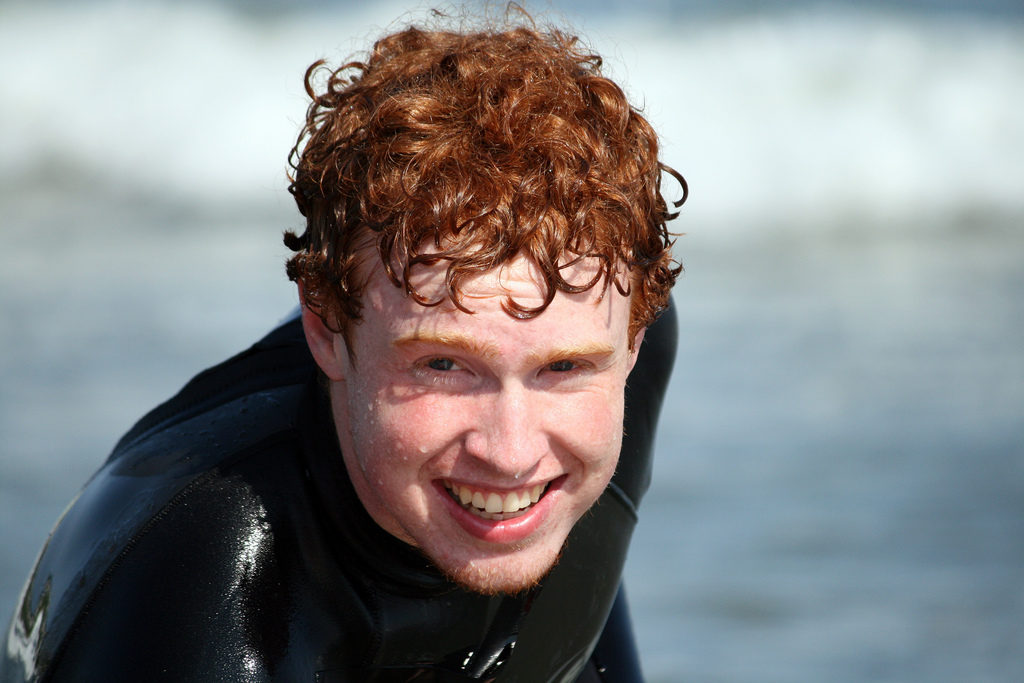
The reliability and durability of the ammunition depends primarily on the quality of raw materials, which is most often neoprene. The same brand can produce different foam qualities, and each manufacturer has its own classification by which it ranks its material in terms of softness and quality. The softer the rubber, the faster it will thin and wear out.
There are three main groups of neoprene manufacturers:
The first, which is considered premium, includes brands such as Yamamoto, Heiwa and Daivado. But not all products of these manufacturers can be classified as elite quality materials. All of the world's diving and spearfishing athletes dive in Yamamoto's # 45 foam products. But neoprene No. 38 from the same brand in its characteristics may not differ in any way (except for a higher cost) from the foam of the second group of manufacturers, which include Sheiko (Taiwan), Nam liong (Taiwan) and Jako (South Korea). They represent a good average and the best value for money. The third group includes Chinese raw materials, which are used by world water equipment companies exclusively for sewing bags, cases and other auxiliary accessories. Chinese rubber thinns and breaks faster than others.
According to the market survey, the rating of high-quality wetsuits can also include products from such companies as:
- O'Neill - clothing for wakeboarding, kiteboarding, waterskiing, windsurfing, surfing and diving;
- Hollis - equipment for technical, recreational and professional diving;
- Arena - starting kit and triathlon outfit;
- Marlin Skiff - diving and spearfishing equipment;
- Pike - equipment for sports, hunting and swimming.
These brands, as well as those listed above, have established themselves as leaders in their segment, including through the use of foam from the best manufacturers.
If you have experience using wetsuits from manufacturers described in the rating, share your opinion in the comments.


